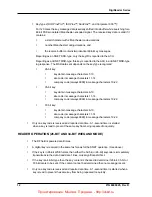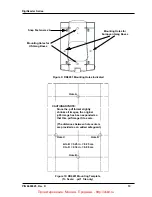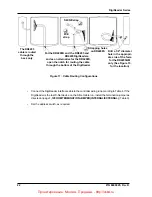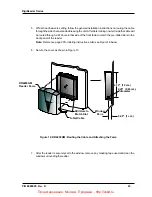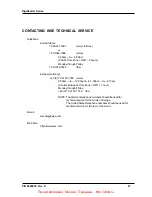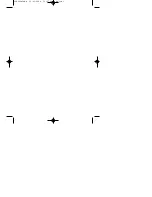
DigiReader Series
20 P/N 6600025, R
EV
. D
TESTING THE DIGIREADER LOCATION
If you suspect the presence of RF interference at a location where you plan to install a DigiReader,
you should check the site prior to mounting the DigiReader unit. The presence of RF interference
may affect a DigiReader in two different ways:
•
If RF interference is present, the DigiReader unit may exhibit false reads (or 'ghost' reads),
i.e., the unit may beep and the LED illuminate, with no access credential present.
•
Alternatively, with RF interference present, the DigiReader unit may read an access
credential inaccurately, slowly, or even may be prevented from reading the credential.
The following procedures will make it easier for you to identify a suitable location and to position the
DigiReader to minimize any RF interference:
1.
The DigiReader models DR4200, DR4203, and DR4205 (all models) have two address switches,
SW1 and SW2. Set the switches on the DR4203 and DR4205 to
FF
for the test mode. The
DigiReader models DR4201, DR4208S, and DR4220 have a five-position dip-switch for the
address. Set all five dip-switch positions to
ON
for the test mode. Then perform the following
steps:
•
Connect only the S-Net wires which provide power, (DC positive power and the DC return,
and the grounding shield), between the DigiReader and the controller.
•
Hold the DigiReader against the installation surface.
•
Verify that there are no cards or other credentials in the area capable of being detected
by the reader. (A credential in your pocket, or somewhere-else where it can be detected,
could be the source of any beeping, so you must be sure this is not the case.)
•
If you are sure no credentials are present and the reader beeps, then there is RF
interference present, causing the beeping. (The number of beeps is an indication of the
degree of noisiness: more beeping indicates a more noisy environment than less beeping.)
•
Keep testing locations until you find one where no false or 'ghost' reads occur.
2.
With no false or 'ghost' reads occurring, and with the reader still in test mode, present a
credential to the reader . The reader should now beep, indicating that the card has been read.
(If the reader does not beep when the card is presented, there may be a source of RF present
blocking the reading of the card. In this case also, keep trying new locations,)
•
With the credential reading correctly, verify the read time and the maximum read distance.
Using the charts on pages 2 and 3 (Tables 1 and 1A), you can determine the reader’s
capability with your chosen credential type(s). This same performance is what you would
expect once the system is completely installed.
3.
When a suitably quiet location has been identified, (relatively free from RF noise), connect the
DATA A and DATA B wires between the DigiReader and the Access Control Unit.
•
Set switches SW1 and SW2, for the DR4203 and DR4205 models (or, for the DR4201, the
DR4208S,or the DR4220, the 5-position dip-switch) to the correct address. With the
Проектирование
.
Монтаж
.
Продажа
. - http://vskd.ru







